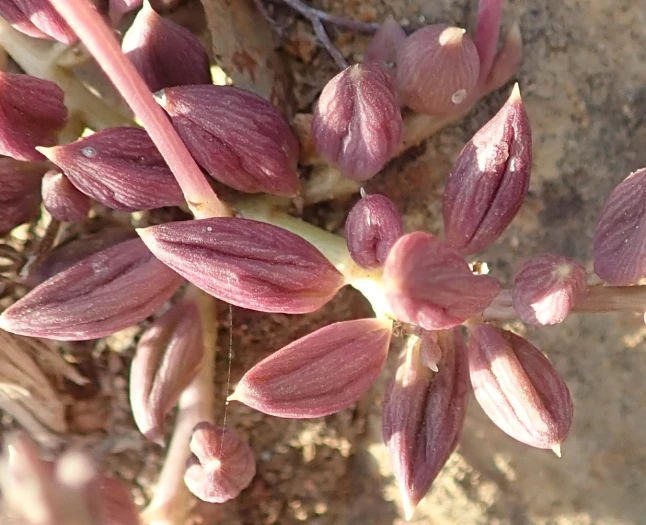String Of Bananas
(Curio radicans)
String Of Bananas (Curio radicans)
/
/

Nicola van Berkel
CC BY-SA 4.0
Image By:
Nicola van Berkel
Recorded By:
Copyright:
CC BY-SA 4.0
Copyright Notice:
Photo by: Nicola van Berkel | License Type: CC BY-SA 4.0 | License URL: http://creativecommons.org/licenses/by-sa/4.0/ | Rights Holder: Nicola van Berkel | Publisher: iNaturalist | Date Created: 2019-11-28T18:23:21-08:00 |







































Estimated Native Range
Climate Requirements for Evans, Georgia
| This Plant | Your Site | Plant Suitability for Your Location | ||
|---|---|---|---|---|
| • Precipitation | 2" - 30" | 47" | Aquatic | Aquatic |
| • High Temp. | 74°F - 105°F | 93°F | Your summer temperatures are normal for this plant. | Excellent |
| • Low Temp. | 22°F - 51°F | 33°F | Your winter temperatures are normal for this plant | Excellent |
This plant may not grow well at your location - your precipitation is too high.
Summary
Curio radicans, commonly known as String Of Bananas, is an evergreen succulent originating from the arid environments of Southern Africa, particularly found in rocky outcrops and on ridges and cliffs. This plant is notable for its cascading stems with glossy, banana-shaped leaves that create a distinctive trailing effect. It typically grows to a length of 36 inches (91 cm) when suspended, making it an excellent choice for hanging baskets. The foliage’s succulent nature allows for water storage, making the plant drought-tolerant and well-suited to arid conditions.
String Of Bananas is celebrated for its unique foliage and ease of care, making it a popular choice for indoor gardens, hanging displays, and as a textural contrast in succulent arrangements. It blooms with small, cinnamon-scented, white or off-white flowers that are most commonly seen in late winter or early spring, though some gardeners can induce multiple flowering periods. The flowers, while not the main attraction, add a subtle charm when they appear. This plant thrives in bright, indirect light or full sun and requires minimal watering, aligning with its low-maintenance nature. It prefers well-draining soil to prevent root rot, which can occur in overly moist conditions. While generally pest-resistant, mealybugs and aphids can sometimes be a concern. It is not typically invasive but should be monitored to ensure it doesn’t overtake nearby plants in outdoor settings.CC BY-SA 4.0
String Of Bananas is celebrated for its unique foliage and ease of care, making it a popular choice for indoor gardens, hanging displays, and as a textural contrast in succulent arrangements. It blooms with small, cinnamon-scented, white or off-white flowers that are most commonly seen in late winter or early spring, though some gardeners can induce multiple flowering periods. The flowers, while not the main attraction, add a subtle charm when they appear. This plant thrives in bright, indirect light or full sun and requires minimal watering, aligning with its low-maintenance nature. It prefers well-draining soil to prevent root rot, which can occur in overly moist conditions. While generally pest-resistant, mealybugs and aphids can sometimes be a concern. It is not typically invasive but should be monitored to ensure it doesn’t overtake nearby plants in outdoor settings.CC BY-SA 4.0
Plant Description
- Plant Type: Succulent
- Height: 1-2.5 feet
- Width: 0.9-1 feet
- Growth Rate: Moderate
- Flower Color: White
- Flowering Season: Winter, Spring
- Leaf Retention: Evergreen
Growth Requirements
- Sun: Part Shade, Full Sun
- Water: Very Low, Low
- Drainage: Fast
Common Uses
Drought Tolerant, Fragrant, Groundcover, Low Maintenance, Potted Plant, Rock Garden
Natural Habitat
Native to arid environments on rocky outcrops and ridges and cliffs in Southern Africa
Other Names
Common Names: Fishhook Senecio, Creeping-Berry, Stor Pärlstånds
Scientific Names: Senecio radicans, Curio radicans, Kleinia radicans, Senecio gonocladus, Kleinia adenocalyx, Cacalia radicans, Senecio adenocalyx, Senecio rhopalodenia
GBIF Accepted Name: Curio radicans (L.) P.V.Heath